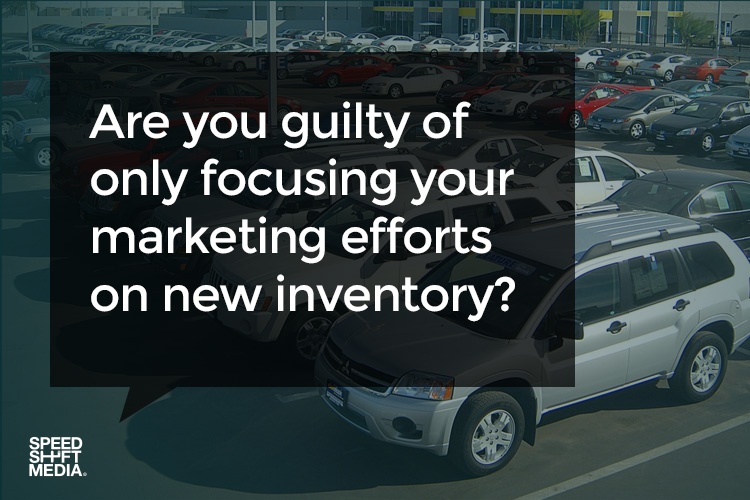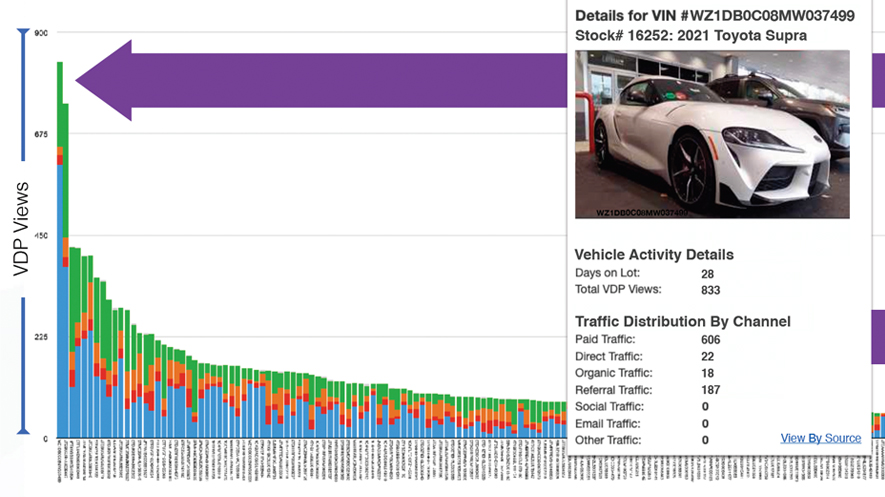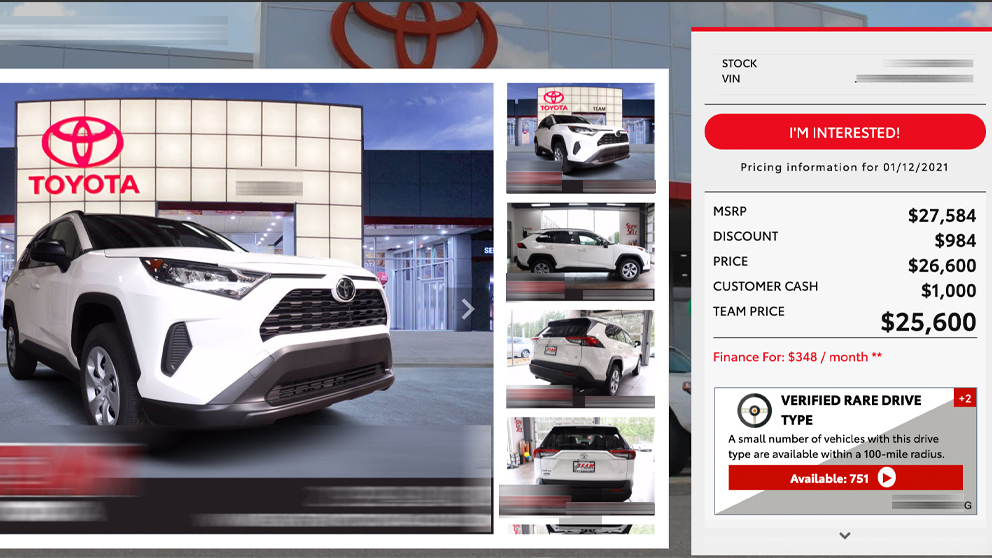New Car Marketing Techniques Aren’t Effective at Marketing Pre-Owned Vehicles
Everyone loves new cars. They’re shiny, they smell great and the sales staff love making a big sale. It’s a huge part of how OEMs rate their dealers as well. I mean, who doesn’t want to be the “#1 Chevy dealer in the county”?
But once we scratch the surface, the bright sheen of selling these new cars starts to wear off. According to the NADA DATA Midyear 2016 Annual Financial Profile, dealers actually LOSE $227 on every new car they sell and PROFIT $228 from every used car they sell.
Now, I’m not suggesting that you don’t shoot for being the “#1 Chevy dealer in the county”, but if you’re looking to make a real profit, you might want to shift your emphasis towards more pre-owned inventory.
However, if you plan on focusing more on pre-owned sales, you need to realize that the methods you’re using to market today aren’t actually optimized for pre-owned sales. Here’s why:
Pre-Owned Buyers Need to Confirm Inventory, New-Car Buyers Don’t
According to an article by Automotive Ventures, “On average, car buyers only visit 2.2 dealerships” and “two-thirds (68%) visited two dealerships or fewer before buying, while 40% of consumers visited only one dealer before buying.”
What this means is that the buyer knows what he/she wants before going into your dealership.
Here’s the difference:
New car shoppers assume you DO have the cars they want on your lot – or that it’s easy for you to get them. After all, if you’re a Ford store, you MUST have the new Ford Mustang, right? And if for whatever reason you don’t happen to have the exact package or color your shopper wants, the shopper expects you to be able to order it for them. As a result, they don’t need to confirm you have to the vehicle they want before they visit.
However, used car shoppers assume you DON’T have the car they want because they know that a used car’s availability is inconsistent. They know that if you don’t have what they want, it’s not as simple as ordering one from the factory. As a result, they need to confirm you have the vehicle before they visit.
In order to optimize marketing for pre-owned vehicles, dealers must move past only marketing the make and model, and go all the way down to the inventory level.
Which brings me to my next point:
Most Dealership Marketing Tactics Don’t Focus on Used Inventory or Any Inventory at All
Let’s look at the most prevalent tactics a typical dealership employs and how they relate to inventory level marketing:
| Digital Channel | Sub Type | Inventory level marketing | Sufficient for New Car Marketing |
| SEM | Branded Keywords | No | Yes |
| SEM | Non Branded Keywords | No | Yes |
| SEO | Blog Articles | No | Yes |
| SEO | Videos | No | Yes |
| Display | Brand, Offers, Specials | No | Yes |
| Sponsored Updates | No | Yes | |
| Sponsored Carousel | Yes | Yes | |
| Listings | AutoTrader & CarGurus | Yes | Yes |
As you can see, a good six out of eight do not market at the inventory level. But, because most dealership marketing is geared toward new cars and new car shoppers assume you have the inventory they want, many dealers stop at this point.
However, only your campaigns on listings sites are actually aligned with how used car shoppers buy, since that channel allows shoppers to confirm available inventory.
Pre-Owned Optimized Marketing = Inventory Level Marketing
The interesting thing about inventory level marketing is not that it’s new but rather, that it’s just a slight variation of some of the existing channels that you are currently using.
In fact, there are webinars available that talk about existing and available technology as well as tactics for optimizing pre-owned vehicle marketing.
So, if you’re more interested in results, try focusing a bit more on marketing your pre-owned cars at the inventory level. According to the data from NADA, your bottom line, and hence your wallet, will thank you.







